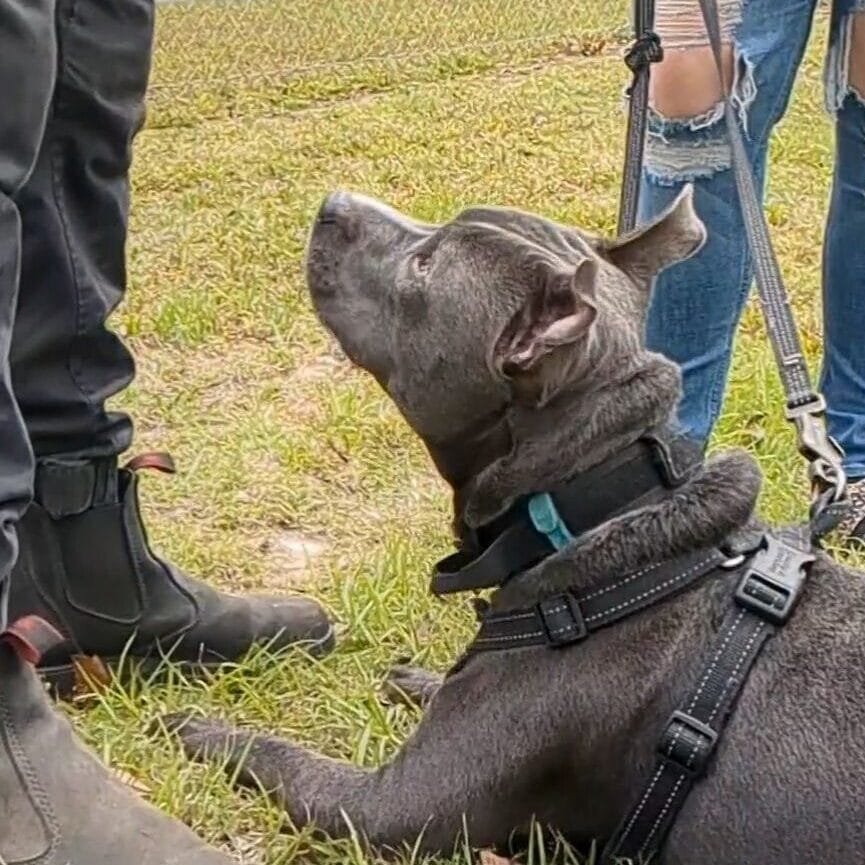Understanding Your Dog’s Behavior
Factors and Prognosis
One of the most common questions I get asked is, “How long will it take to resolve my dog’s behavior problems?” I completely understand why you are asking, but it would be unethical of me to give a prognosis over the phone without a comprehensive consultation. Moreover, just like a single therapy session won’t magically fix all our problems, addressing dog behaviors requires ongoing effort and understanding.
A Real-Life Example: Meet Kai

Let me share a story about Kai, a spunky rescue dog. Kai was constantly trying to chase and catch the stray cats in the area, lunging towards other dogs, and had destructive tendencies.
His owners, Mr. and Mrs. Winters, were feeling defeated and worried because they didn’t know how to help him.
They have attempted training games and puzzle toys. They have also focused on training obedience. However, I explained it would require time, patience, and a deep understanding of Kai’s stress management to comprehend and address his behavior effectively.
During our behavior session, we discovered certain environmental stressors and a lack of clear, consistent coping mechanisms triggered that Kai’s behavior.
By focusing on building a strong bond with Kai and gradually exposing him to stressors or exciting situations, Mr. and Mrs. Winters saw improvements. It wasn’t an overnight change, but with dedication and the right strategies Kai became clamber and more responsive.

Why Comprehensive Assessment Matters
Assessment scales are not new. I appreciate Elisheba Fay’s objective viewpoint in this article, which discusses the pros and cons of these tools. Her balanced approach is inspiring and highlights the importance of using multiple methods to get a complete picture.
Key Factors in Dog Behavior Analysis
Latency & Recovery Rate
Understanding how your dog reacts to stressors and how quickly they can recover is crucial. It’s not just about obedience skills; it’s about their ability to handle repeated encounters with excitement or stress and then relax on their own. Here are some questions to consider:
- How many consecutive stressors can your dog handle before they become unresponsive?
- How long does it take for your dog to calm down after multiple stressors?
Predictability in the Environment
When a dog engages in unwanted behavior 60-80% of the time, it becomes less likely for them to learn new behaviors. However, with a solid foundation of coping skills and a strong bond with your dog, both of you will feel more confident in stressful or exciting situations.
Safety Risks
Understanding all behavioral patterns and stimuli involved in undesired behaviors is essential. Every dog has the potential to nip, just as every person can react violently if provoked. It’s important to comprehend the context around these behaviors to address them effectively.
Examples of Various Bite Scales
Cara Shannon’s Bite Scale
Dr. Ian Dunbar Bite Scale
Conclusion
By examining these factors and more, we can create a comprehensive and ethical plan tailored to your dog’s needs. Remember, the journey to improving your dog’s behavior is a collaborative process, and I’m here to guide you every step of the way.
